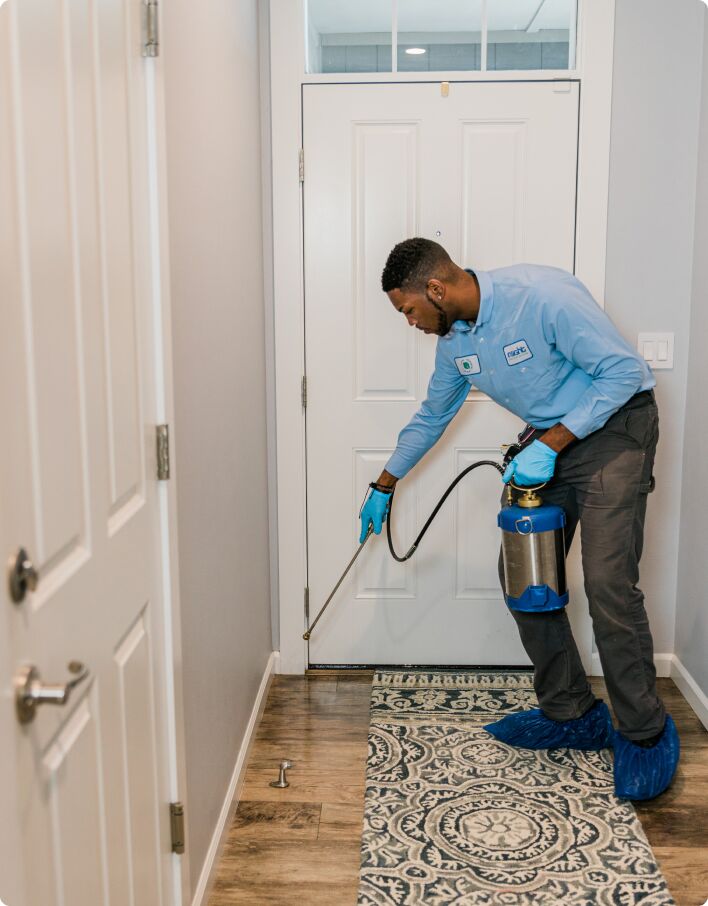Efficient A1 Bed Bug Treatment in Charlotte - Safe and Proven Approaches
Efficient A1 Bed Bug Treatment in Charlotte - Safe and Proven Approaches
Blog Article
Bed Pest Therapy Malfunction: Contrasting Chemical Vs. Non-Chemical Solutions
In the realm of insect control, specifically when managing the consistent problem of bed pests, the option in between chemical and non-chemical treatment solutions can be a crucial one. Both techniques use distinct benefits and downsides, influencing elements such as performance, safety and security factors to consider, and general expense. By analyzing the nuanced details of each approach, a clearer understanding of which course to pursue in addressing a bed pest invasion can be acquired.
Effectiveness of Chemical Therapies
Chemical therapies for bed pest infestations have actually been widely acknowledged for their powerful and fast efficacy in eradicating these pests. When considering the effectiveness of chemical therapies, it is critical to understand that they can supply a comprehensive and quick option to a bed insect trouble.
Furthermore, chemical therapies have the benefit of supplying residual results, meaning that they can remain to remove bed bugs even after the initial application. This recurring action is particularly beneficial in combating any possible re-infestations. In addition, the quick activity of chemical therapies can bring relief to people dealing with extreme bed bug invasions, enabling them to gain back control of their home swiftly.
Safety And Security Worry About Chemical Solutions
One essential facet that calls for cautious factor to consider when using chemical solutions for bed pest treatment is making certain the safety and security of owners and the environment. Direct exposure to specific chemicals used in bed pest treatments can lead to respiratory issues, skin inflammation, or other damaging reactions, particularly in individuals with pre-existing conditions or level of sensitivities.
In addition, the environmental impact of chemical options is one more significant factor to consider. Some pesticides utilized in bed insect treatments may be unsafe to helpful insects, wild animals, and communities if they seep into the soil or water supply. It is necessary to utilize chemical treatments carefully, following security standards, and thinking about much less toxic choices to minimize these threats and ensure the reliable and safe monitoring of bed pest infestations.
Benefits of Non-Chemical Methods
Considering the possible safety and security concerns and environmental influence associated with chemical services for bed pest treatment, discovering non-chemical approaches provides an appealing choice with numerous distinct advantages. Non-chemical therapies are environmentally friendly, as they do not contribute to air or water contamination, making them a lasting option for pest control.
Furthermore, non-chemical options can be efficient in targeting bed bugs, including hard-to-reach areas where chemical treatments might not pass through. Techniques such as heat therapy, vacuuming, vapor cleansing, and mattress encasements provide comprehensive elimination without making use of unsafe chemicals. Moreover, non-chemical strategies can be much less turbulent, calling for minimal preparation and allowing for quicker reentry into treated areas. In general, choosing non-chemical bed bug treatment approaches not only prioritizes safety and security and environmental security but also makes sure detailed and effective pest control.
Limitations of Non-Chemical Treatments

Furthermore, non-chemical therapies commonly need multiple applications to accomplish effective elimination. This can be taxing and might not always guarantee complete removal of all bed bugs and their eggs, particularly in covert or hard-to-reach places.
Furthermore, the success of non-chemical treatments greatly relies upon correct application and content thoroughness, which can be challenging for people without specialist know-how. Inadequate application of non-chemical approaches may result in incomplete obliteration, causing persistent infestations and the requirement for extra treatments.
As a result, while non-chemical therapies have their benefits, it is necessary to acknowledge these constraints and consider them when establishing the most effective method for handling bed pest problems.
Expense Comparison: Chemical Vs. Non-Chemical Options
Offered the restrictions associated with non-chemical therapies, an important facet to evaluate in the context of bed bug management is the price comparison in between chemical and non-chemical options. In comparison, non-chemical therapies like warmth therapy or heavy steam can be more expensive, with costs ranging from $1,000 to $6,000 for an entire home. While the first expense of chemical treatments might appear lower, several treatments may be called for to totally eliminate the infestation, potentially increasing the general expense.
Conclusion

Thinking about the potential safety and security problems and environmental effect associated with chemical options for bed pest therapy, checking out non-chemical strategies presents an encouraging alternative with a number of distinct benefits.Offered the limitations linked with non-chemical treatments, a link necessary facet to examine in the context of bed bug administration is the cost contrast in between chemical and non-chemical choices. In contrast, non-chemical therapies like warm therapy or heavy steam can be much more pricey, with prices ranging from $1,000 to $6,000 for an entire home. While the preliminary price of chemical treatments might appear lower, numerous treatments may be needed to totally eliminate the problem, potentially boosting the overall cost.In verdict, when comparing chemical and non-chemical bed insect treatment choices, it is crucial to consider efficiency, security, benefits, constraints, and cost.
Report this page